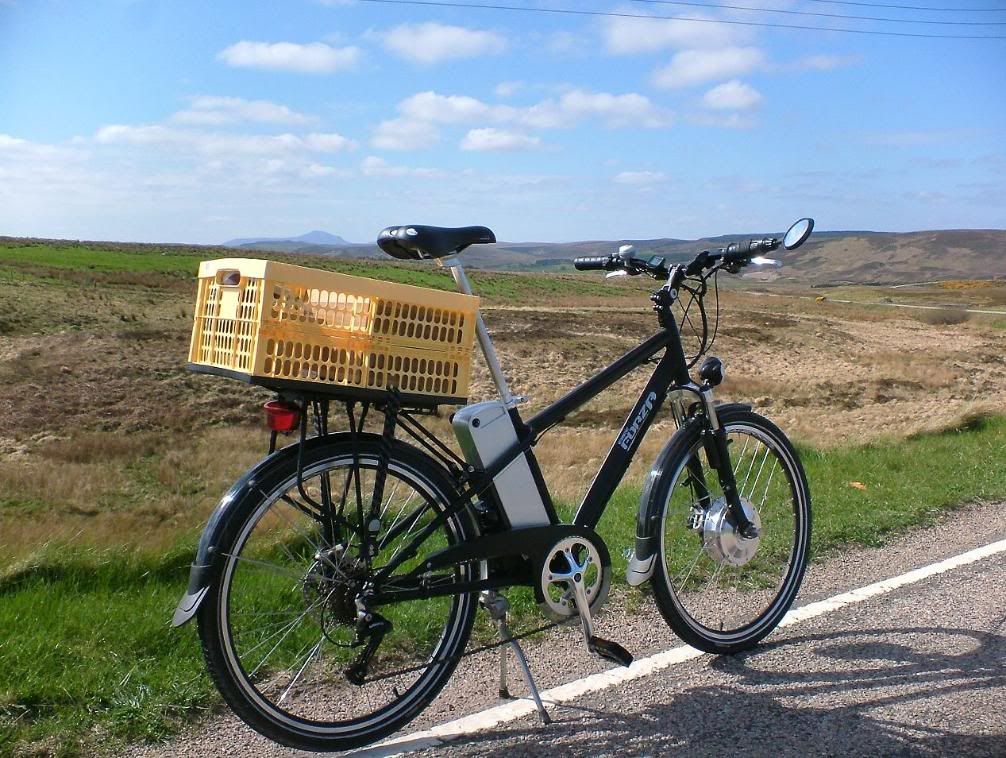A few weeks ago I fitted an ammeter to my Torq in order to monitor current consumption from the battery, mainly out of personal interest but also as an aid to minimising power consumption and therefore maximising range.
The instrument itself is a blue LED 3 digit meter in a somewhat crudely weatherproofed box on the handlebars with a shunt resistor mounted directly on the battery connector, the shunt being simply a short stainless steel bar with a resistance of approximately 0.75 mOhms or 0.75/1000 ohms or virtually a short circuit!
The meter box also contains a 24V regulator feeding a DC-DC converter with a 5V isolated output for the meter and a switch which enables it to measure battery voltage as well. It was carefully calibrated against a professionally calibrated reference instrument.
The current consumption figures shown by the meter are in many ways what was expected but in other ways are quite surprising. No doubt those users who have Drain Brains or Watts Up devices will be aware of the following, but others may find the findings interesting, and maybe of help in maximising range.
In restricted mode the maximum current draw is 17A (600W) but this only occurs between about 9 and 11 mph, the controller limiting the current outside of this range. The motor will continue to draw current up to about 17mph but at this speed it is negligible. As torque is proportional to current this shows how the artificial restriction of the motor limits severely limits its usable torque/speed range.
In de-restricted mode the maximum current is a whopping 22A (800W) from less than 10mph to over 20mph and this current is maintained continuously during a hard climb, no wonder that some users have had battery cut-out problems.
Tiny variations in the throttle position produce large variations in the current consumption.
With no wind on a smooth level surface and without pedalling a miserly 1A will give a speed of 7mph, but doubling the speed requires just over 4 times the current. It's pleasing that these practical results are almost exactly what theory predicts.
A current of 2-3 amps makes pedalling at 14 mph pleasantly easy.

The instrument itself is a blue LED 3 digit meter in a somewhat crudely weatherproofed box on the handlebars with a shunt resistor mounted directly on the battery connector, the shunt being simply a short stainless steel bar with a resistance of approximately 0.75 mOhms or 0.75/1000 ohms or virtually a short circuit!
The meter box also contains a 24V regulator feeding a DC-DC converter with a 5V isolated output for the meter and a switch which enables it to measure battery voltage as well. It was carefully calibrated against a professionally calibrated reference instrument.
The current consumption figures shown by the meter are in many ways what was expected but in other ways are quite surprising. No doubt those users who have Drain Brains or Watts Up devices will be aware of the following, but others may find the findings interesting, and maybe of help in maximising range.
In restricted mode the maximum current draw is 17A (600W) but this only occurs between about 9 and 11 mph, the controller limiting the current outside of this range. The motor will continue to draw current up to about 17mph but at this speed it is negligible. As torque is proportional to current this shows how the artificial restriction of the motor limits severely limits its usable torque/speed range.
In de-restricted mode the maximum current is a whopping 22A (800W) from less than 10mph to over 20mph and this current is maintained continuously during a hard climb, no wonder that some users have had battery cut-out problems.
Tiny variations in the throttle position produce large variations in the current consumption.
With no wind on a smooth level surface and without pedalling a miserly 1A will give a speed of 7mph, but doubling the speed requires just over 4 times the current. It's pleasing that these practical results are almost exactly what theory predicts.
A current of 2-3 amps makes pedalling at 14 mph pleasantly easy.















